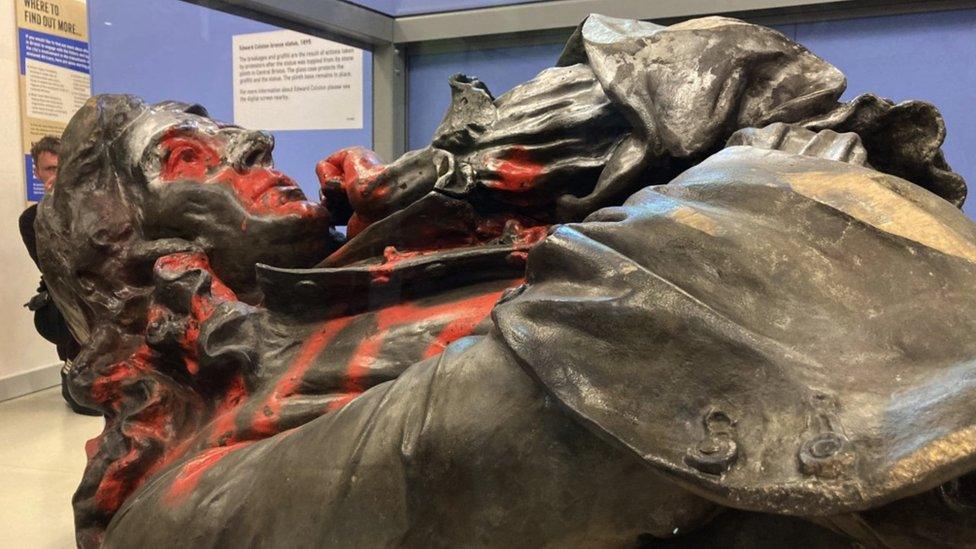Historian defends plaque wording for Colston plinth
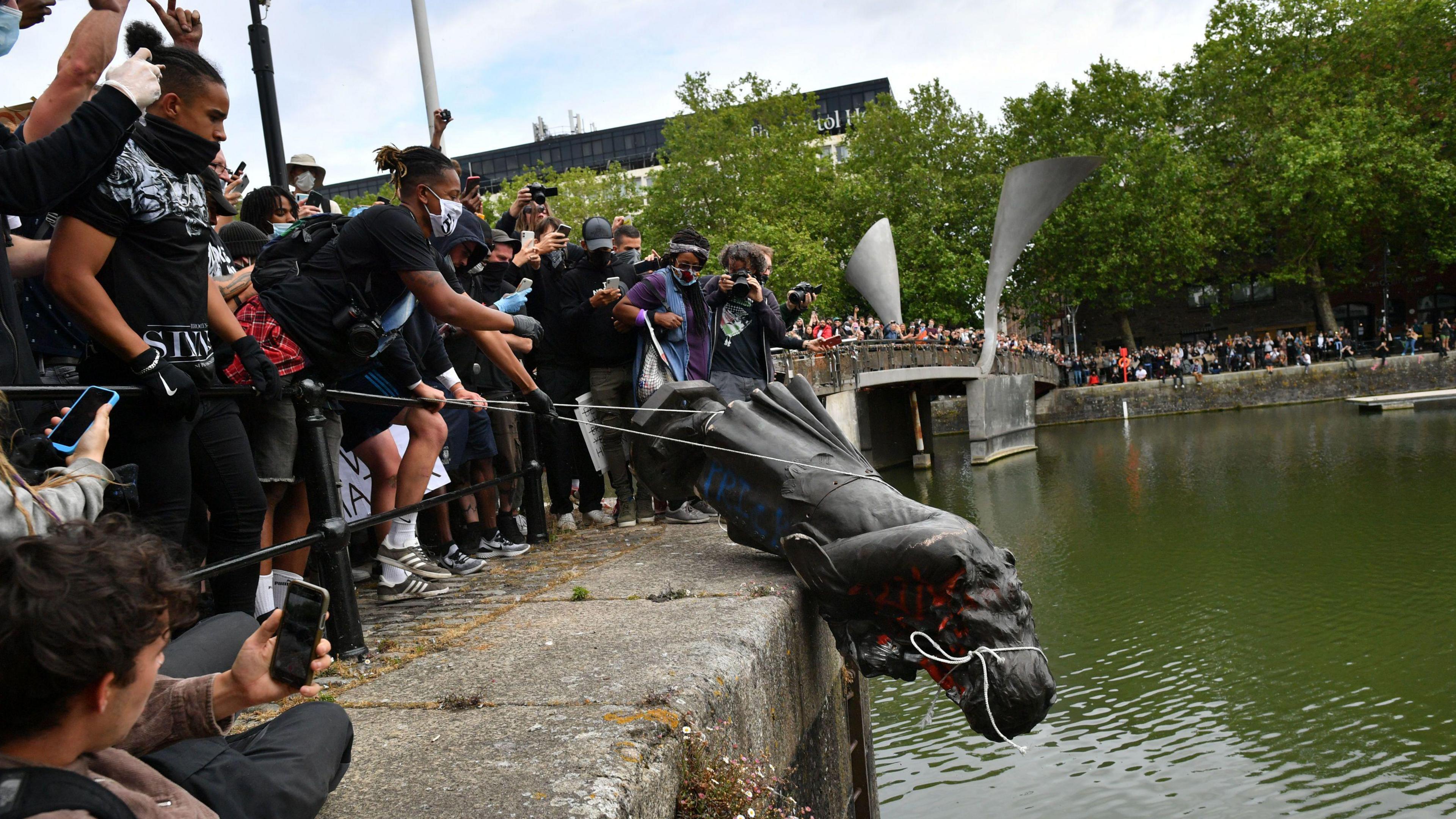
The Colston statue was pulled down and thrown into Bristol harbour in 2020
- Published
A leading historian has defended the wording of a new plaque planned for the empty Colston plinth in Bristol.
The Grade II listed statue of Edward Colston was toppled during an anti-racism protest in Bristol on 7 June 2020, leaving the plinth empty.
There was some criticism that the wording of the plaque "downplays and glosses over" Colston's role in the transatlantic slave trade.
Tim Cole, of the History Commission, said most people wanted "something short and factual that explained what was absent and why".
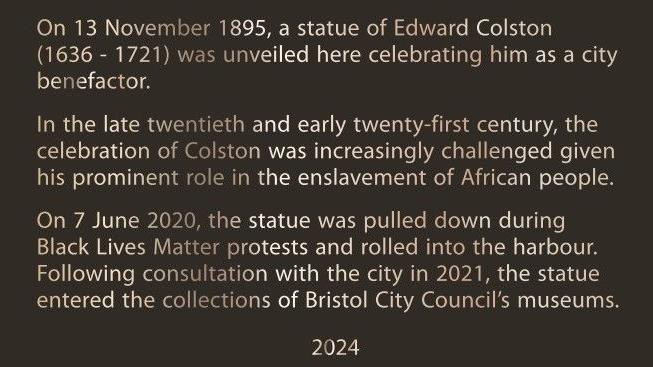
City councillors are being asked to approve the proposed wording
He added: “Most people in the city wished to see a plaque placed on the plinth briefly explaining what once stood here, why it was now empty, and what happened to the statue."
Bristol City Council planning officers have recommended that the planning committee approve the wording at a meeting on 10 April.
They have also suggested placing a QR code next to the plaque explaining more about Colston and how historians came up with the wording of the plaque, according to the Local Democracy Reporting Service.
A line in the planning report states: “if you asked 20 people to write their own words for the plaque, you would get 20 different versions."
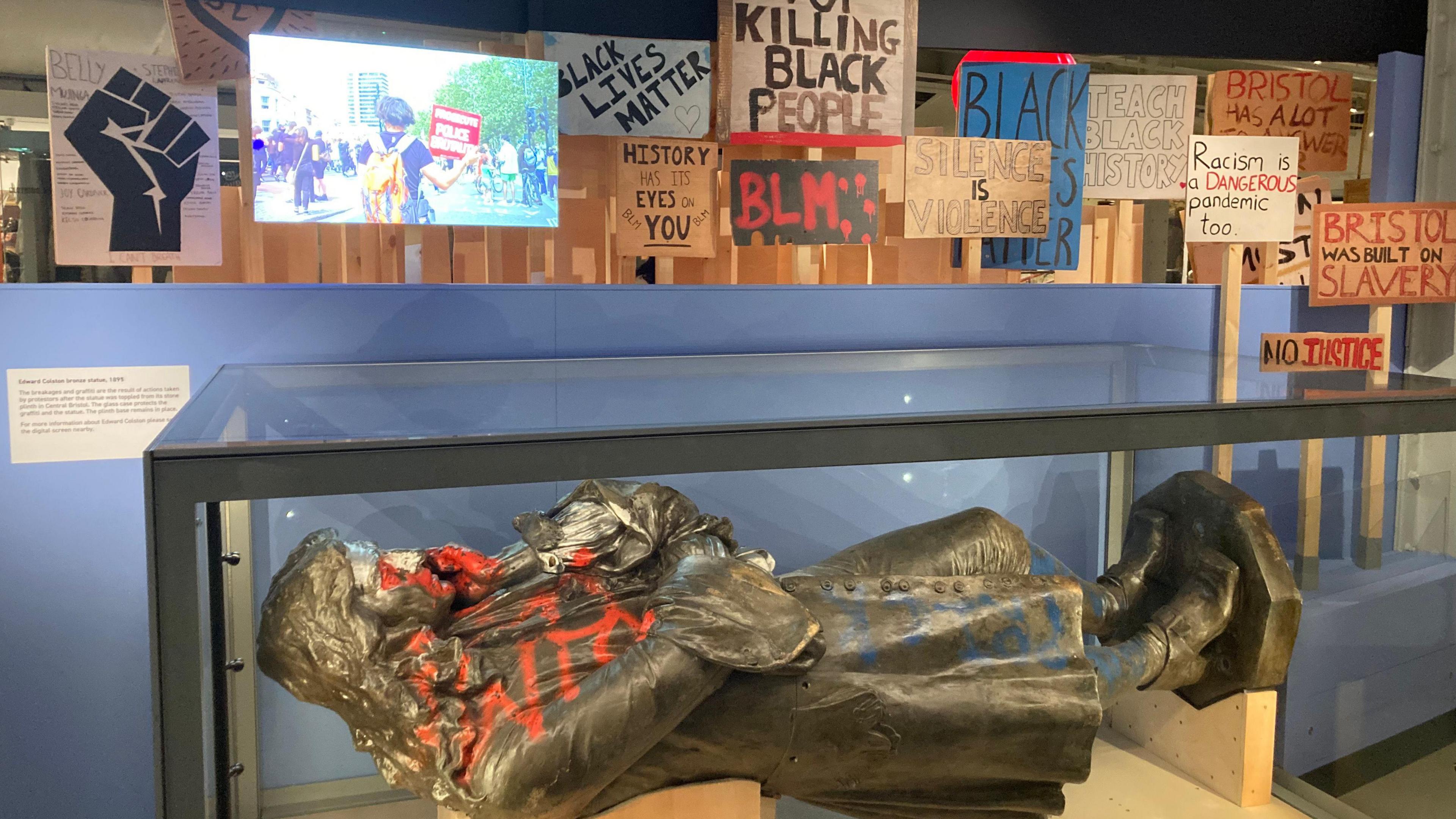
The statue is now on permanent display at The M Shed museum
The M Shed museum opened an exhibition on protest in March, which sees the statue of Colston on permanent display.
Mr Cole said historians saw the plaque as a pointer for interested visitors to go to the museum to read a fuller history of Colston and engage in a more thorough discussion of the statue.
"People recognised that this kind of contextualisation required far more words than can be placed on a short plaque and hence wished for the statue to be displayed in the museum," he said.
“The critical thing is that the plaque orients the visitor to the museum, where a much richer and more dynamic display is possible."
- Published7 June 2023
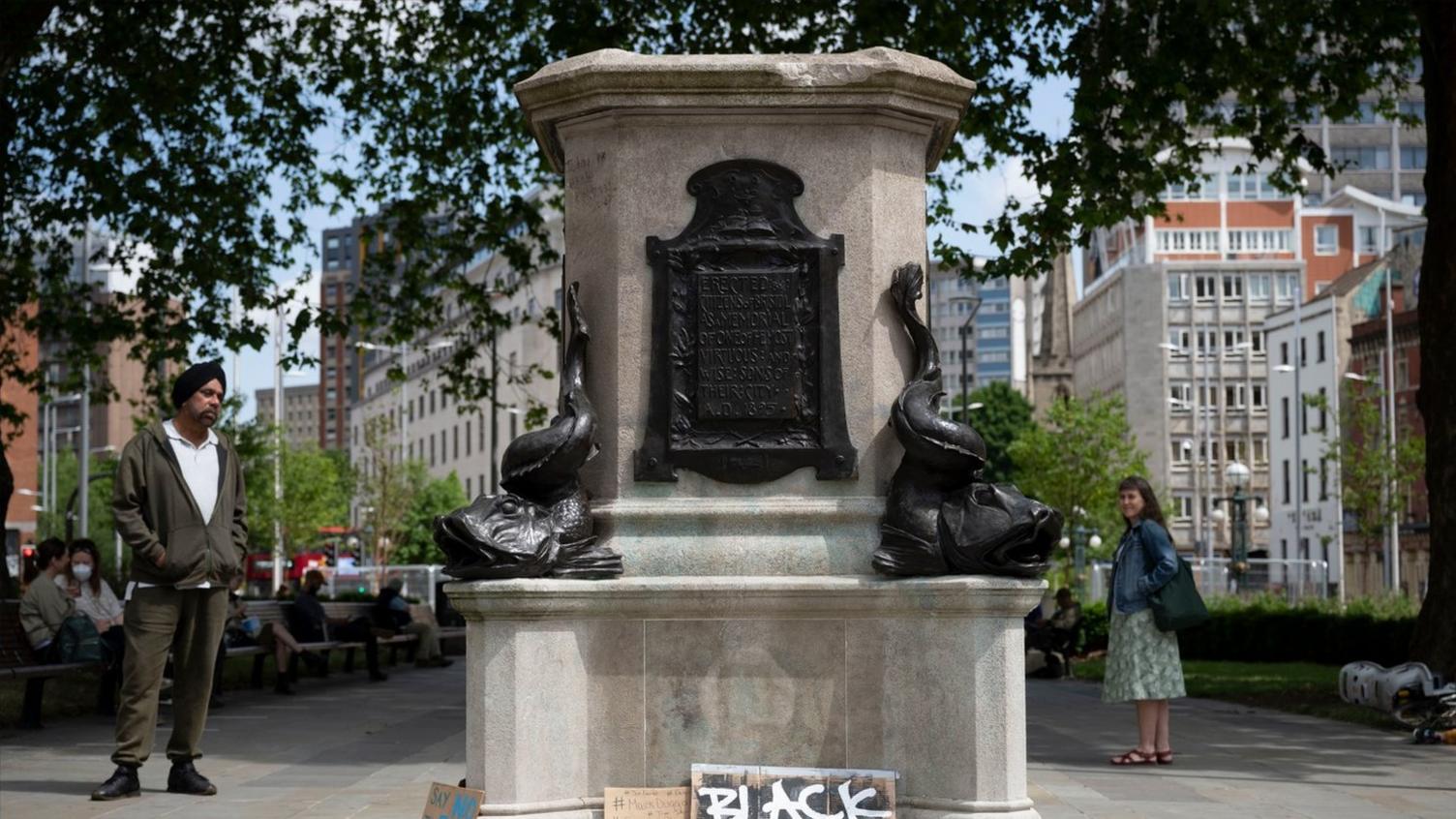
- Published6 January 2022
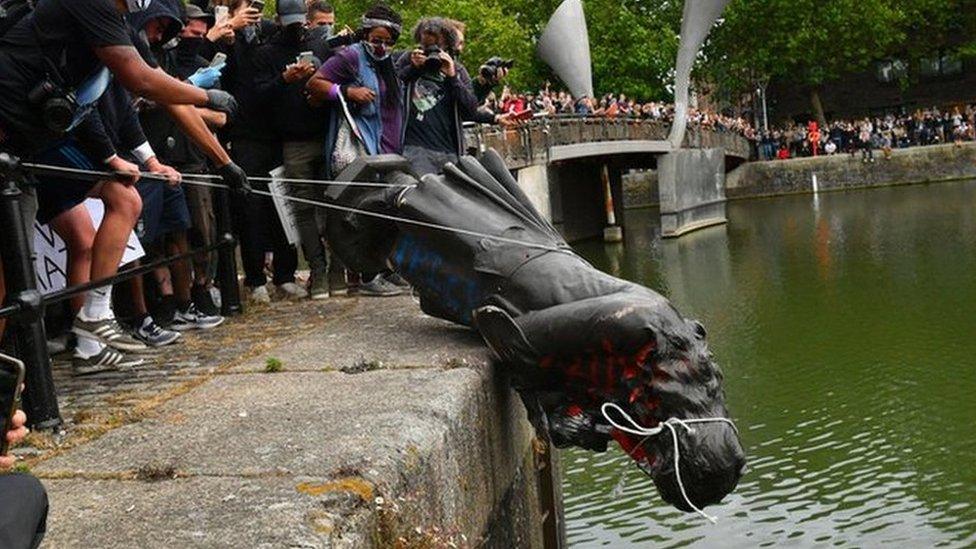
- Published14 March 2024
